stereotypes 2
1/11
There's no tags or description
Looks like no tags are added yet.
Name | Mastery | Learn | Test | Matching | Spaced |
|---|
No study sessions yet.
12 Terms
describe Lyons and Kashmina (2001)
examined transmission of stereotypes in communication chains
a few rungs down the chain, inconsistent info disappears but consistent info remains intact
highlights shared nature of stereotypes - if we all held different stereotypes, these would counter one another in the chain
why do stories get more stereotypical in content as they get passed on?
cognitive processes - we remember stereotype-consistent into better, pay more attention to it etc.
social processes - we want to establish common ground with others so we share info with them that likely to be expected; we signal we’re on the same page
describe the linguistic category model (Semin & Fiedler, 1988)
descriptive action verb (DAV)
interpretative action verb (IAV)
state verb (SV)
adjective (Adj)
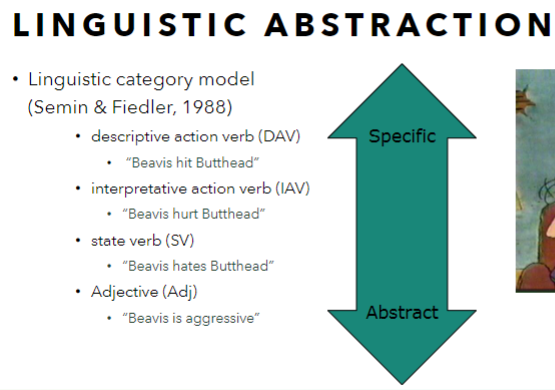
describe Maas et al. (1989)
examined how language abstraction used to describe in-group and out-group members can transmit and sustain stereotypes
more abstract language is used for positive ingroup and negative outgroup behaviours
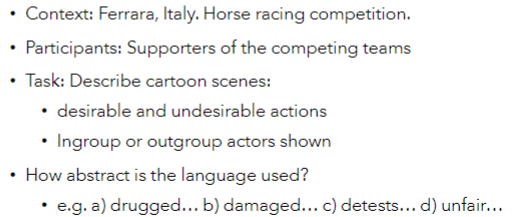
describe Maas et al. study 3 (1989)
participants read descriptions of behaviours generated in study 1 (without seeing the cartoons)
ask “in your opinion, how much info does the phrase reveal about the protagonist” and “in your opinion, how likely is it that the same action or attribute will be repeated in the future”
results - increasing levels of abstraction were seen as more informative about the actor and more likely to be repeated
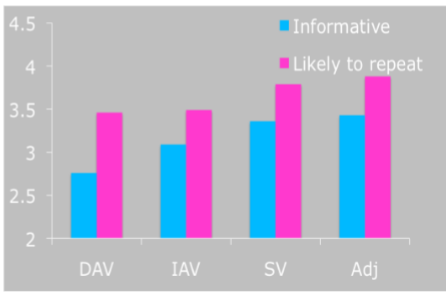
how does language abstraction propagate stereotypes?
positive ingroup and negative outgroup behaviour is presented as enduring and typical
applied to members of a group repeatedly leading to stereotyping

when does stereotype threat occur?
when people believe they might be judged in light of a negative stereotype about their social identity and that they may inadvertently act in some way to confirm a negative stereotype of their group
awareness of one’s group is negatively stereotyped in a given domain can give rise to concerns about whether the self will be judged against those standards
describe Steele and Aronson (1995)
examined performance on an intellectual ability test among Black and White participants with ethnicity made salient or not
ethnicity was made salient by asking participants demographic info immediately before taking verbal ability test; not collected in non-salient condition
drop in performance by minority ethic groups when reminded of ethnicity; no significant difference when not reminded
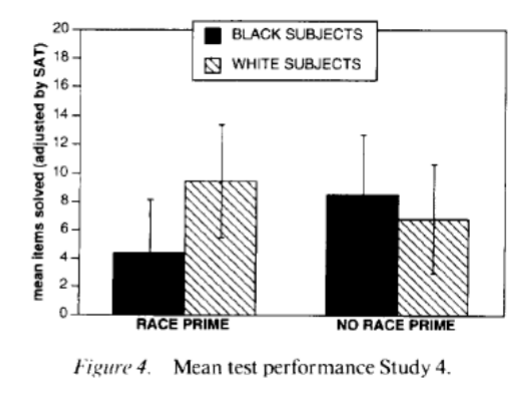
describe Spencer, Steele and Quinn (1999)
male and female participants selected with the same maths ability
participants asked to take a maths test that was either described as being diagnostic of gender differences in maths or not
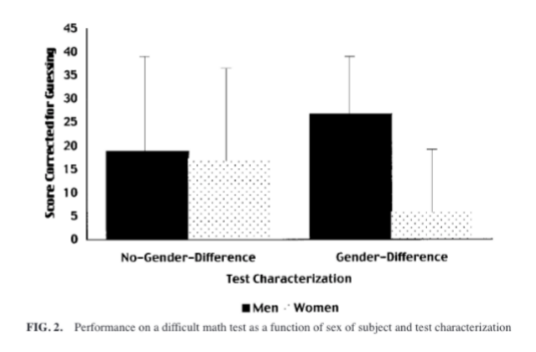
describe the stereotype threat process
stereotype activation
physical stress, self-monitoring, thought suppression
performance
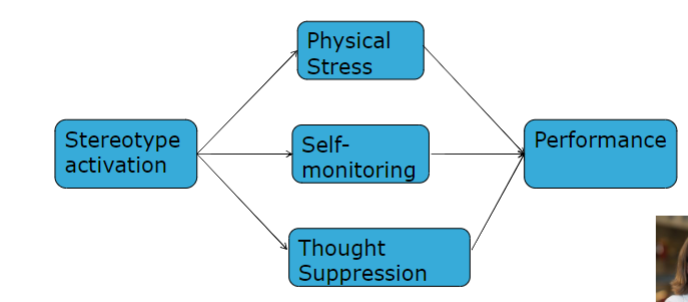
how can stereotype threat performance decrements be prevented?
affirming the self in another way
distancing from aspects of the stereotype that are incompatible with high performance
transforming negative aspects into positive aspects
describe Aronson, Fried and Good (2002)
aim - to counter the effects of stereotype threat on African American college students’ academic performance
method - intervention focused on conceptions of intelligence as malleable (growth mindset) or fixed (fixed mindset)
three conditions - pen pal + growth mindset; pen pal + control, no pen pal + control
